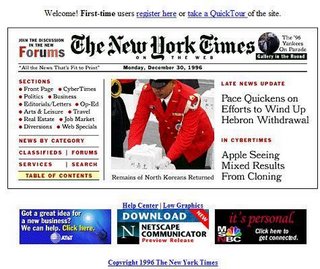nytimes.com: 1996

The New York Times was an innovator in the early years of the WWW. They were one of the first newspapers to deliver content online and they continued to offer the content for free (with registration) for many years. Once they had a contest to rewrite the motto 'All the news the fit to print' for their online edition. This early site from 1996 but with a 45K size main graphic was a pain to download over a 28 baud modem.








